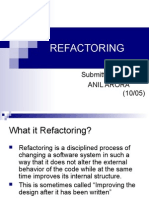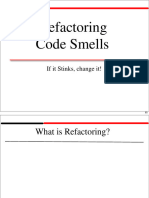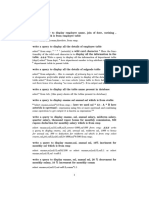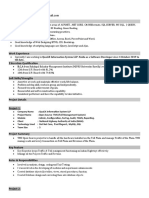0% found this document useful (0 votes)
26 views53 pagesBad Smells in Code
Refactoring is the process of restructuring software to enhance its readability and maintainability without altering its observable behavior. It is essential for improving software design, facilitating bug detection, and expediting programming, often occurring in small increments during development. However, refactoring should be approached with caution, particularly when dealing with complex systems like databases or when deadlines are imminent.
Uploaded by
Muhammad AbubakarCopyright
© © All Rights Reserved
We take content rights seriously. If you suspect this is your content, claim it here.
Available Formats
Download as PPTX, PDF, TXT or read online on Scribd
0% found this document useful (0 votes)
26 views53 pagesBad Smells in Code
Refactoring is the process of restructuring software to enhance its readability and maintainability without altering its observable behavior. It is essential for improving software design, facilitating bug detection, and expediting programming, often occurring in small increments during development. However, refactoring should be approached with caution, particularly when dealing with complex systems like databases or when deadlines are imminent.
Uploaded by
Muhammad AbubakarCopyright
© © All Rights Reserved
We take content rights seriously. If you suspect this is your content, claim it here.
Available Formats
Download as PPTX, PDF, TXT or read online on Scribd
/ 53




























































































